If you’re from the United States, chances are you have heard all about habaneros. In fact, they’re one of the easiest “superhot” peppers that is available in regular grocery stores.
However, if you’re from the Caribbean, you may be more familiar with scotch bonnet peppers. These are essential in jerk chicken, Jamaican hot sauce, and many other authentic West Indies dishes.
So, what is the difference? In this article, it’s a faceoff of scotch bonnet vs habanero peppers. How do they differ in flavor, heat level, origins, and growth pattern? Let’s get into it!
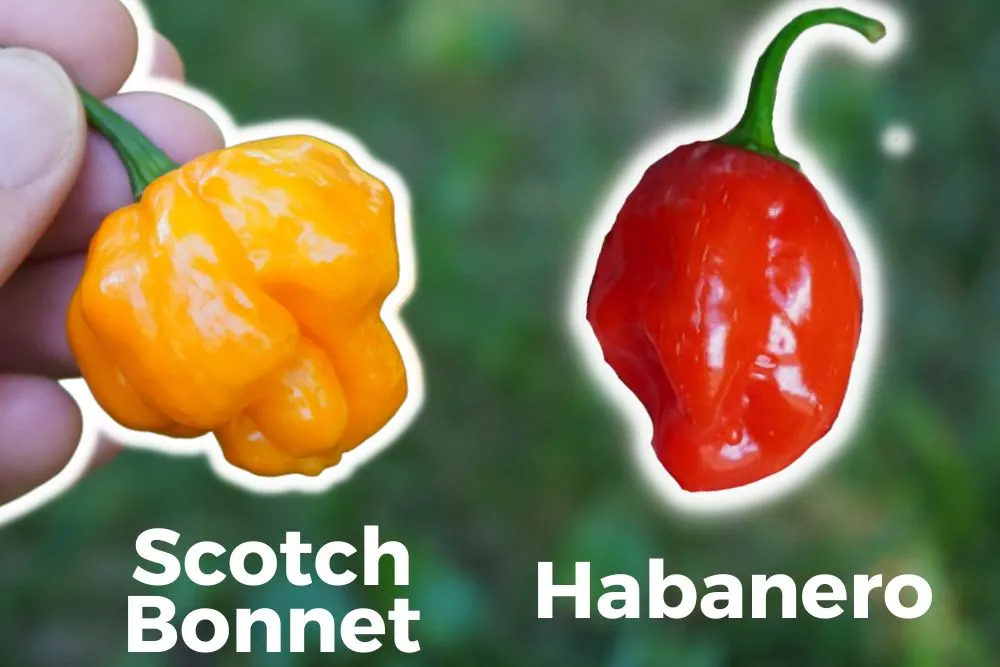
Origins
Scotch bonnet and habanero peppers have similar origins. Both varieties were first cultivated in the Caribbean, and can be further traced back to the Amazon basin.
Today, the scotch bonnet has strong connections to Jamaica, where it is grown and used widely. Popular cuisines include jerk chicken marinade, peppered shrimp and conch, curry goat, and many other dishes.
The habanero is most popular in the Mexican Yucatán peninsula, where it is grown to this day. Popular foods using habaneros include hot sauces and pickled onions.
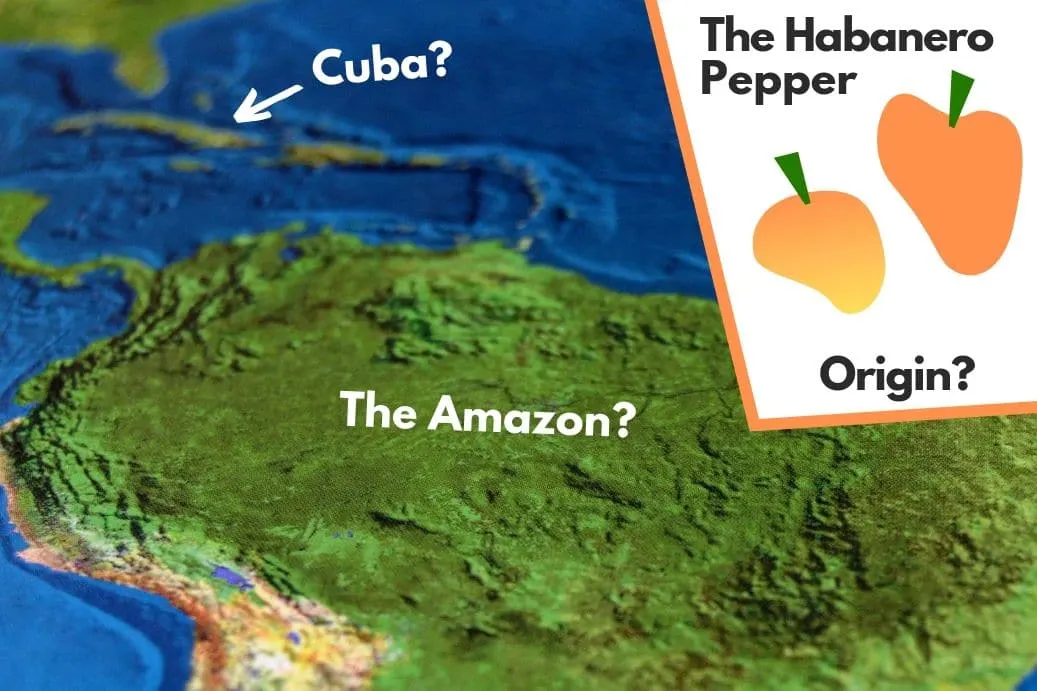
Note: The word “habanero” is used to describe a variety of different peppers in the Yucatan peninsula (southeast Mexico). It is thought that habaneros were first brought to Mexico from Cuba, where “Havana” is the capital. There are many habanero types, ranging in size, color, and heat level.
Both scotch bonnets and habaneros are part of the Capsicum chinense species, and are closely related to some of the hottest peppers in the world. Close relatives include the ghost pepper (bhut jolokia), Carolina reaper, and Bahamian goat.
Given their original climate, both plants like the same type of weather: warm and humid with rich, well-drained soil. Both plants can be productive, though in my experience habaneros grow larger and with more fruits.
Scotch Bonnet vs Habanero Appearance
Both scotch bonnet and habanero peppers come in a variety of types. However, traditional habaneros are orange or red, while traditional scotch bonnets are yellow or red.
The scotch bonnet actually gets its name thanks to its unique shape. The “bonnet” refers to the pepper’s resemblance to a traditional “Tam o’ Shanter” Scottish cap. I personally think they look more like a mushroom.
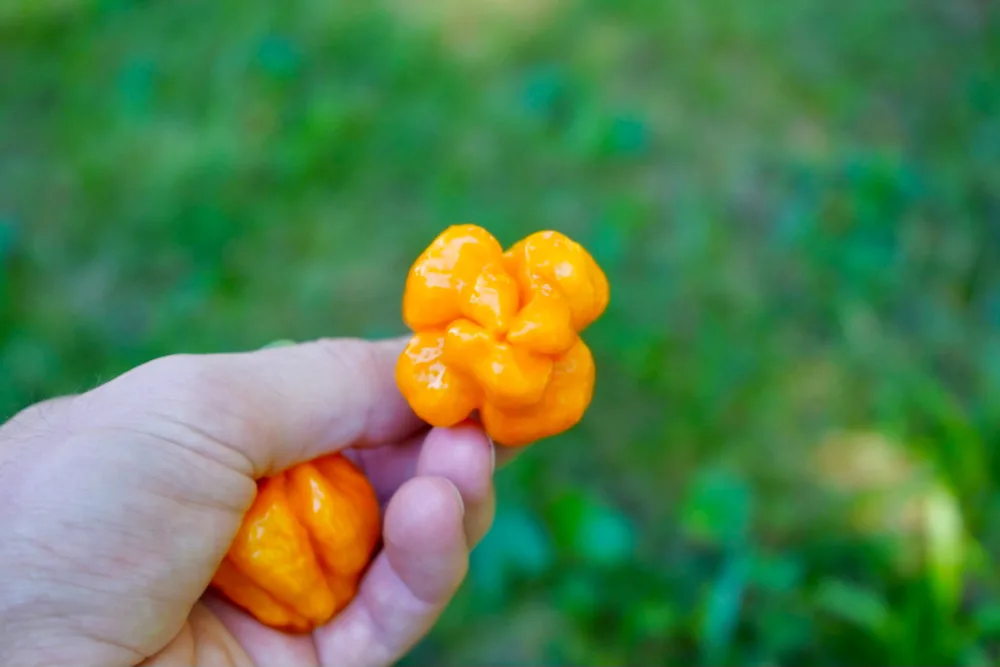
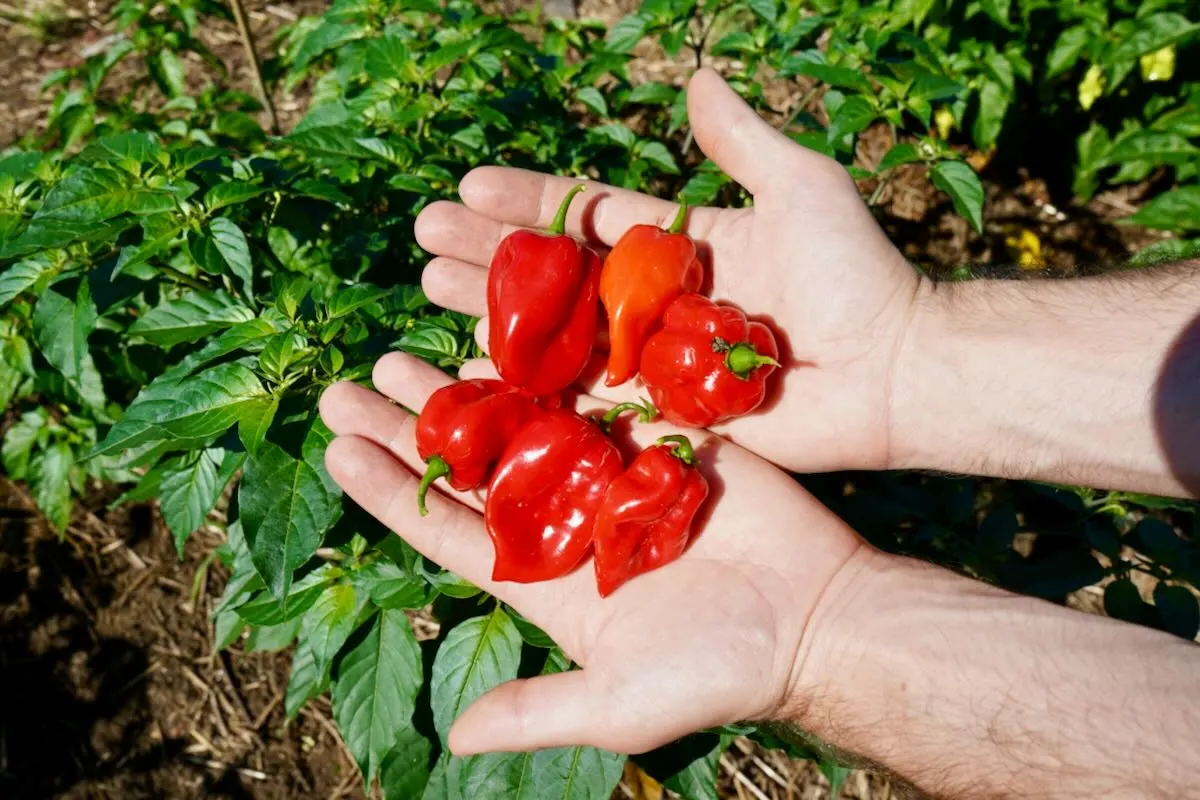
The habanero has a much smoother skin, often with a pointed blossom end. Habaneros can also be larger than scotch bonnets, again, depending on the variety. The biggest habaneros we have grown were mustard habaneros.
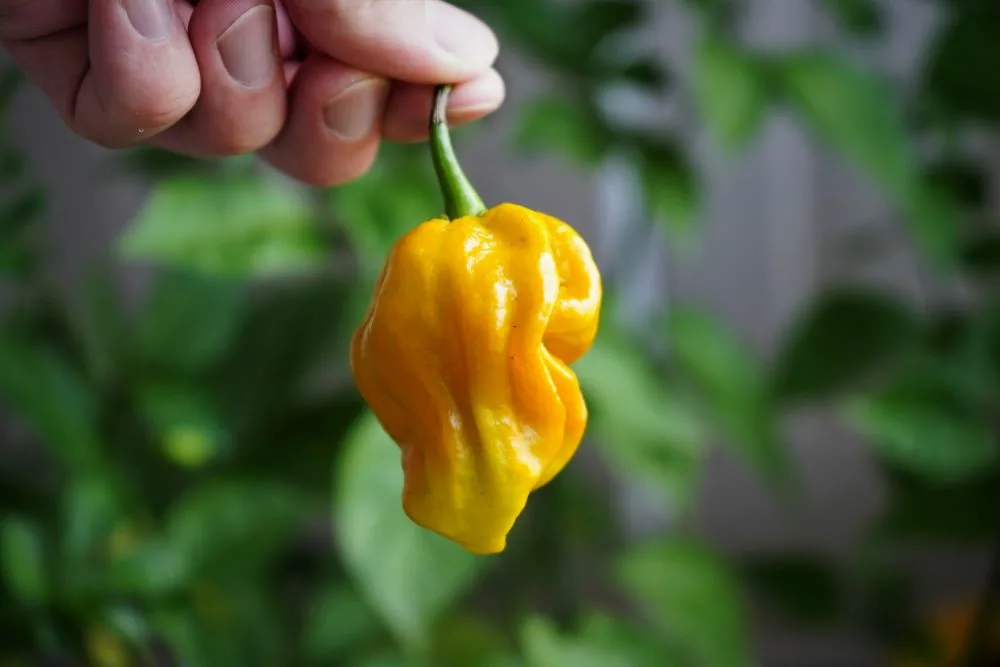
Flavor Notes
While these two peppers are fairly similar in origin, their flavors are different. If you can get past the fiery kick, you’ll be delighted by how these two peppers taste.
- Habanero peppers are floral and smoky, with a decent amount of fruitiness (especially when ripe). There are red, orange, and even brown habanero peppers, and each has a distinct flavor profile. My personal favorite is the classic red habanero – sweet and fruity, perfect for hot sauce!
- Scotch bonnet peppers have a strong citrus note, very similar to fresh squeezed lemon. The flowery aroma of habaneros is not nearly as strong in scotch bonnets. This makes them a great choice for pairing with fruity flavors such as mango or pineapple.
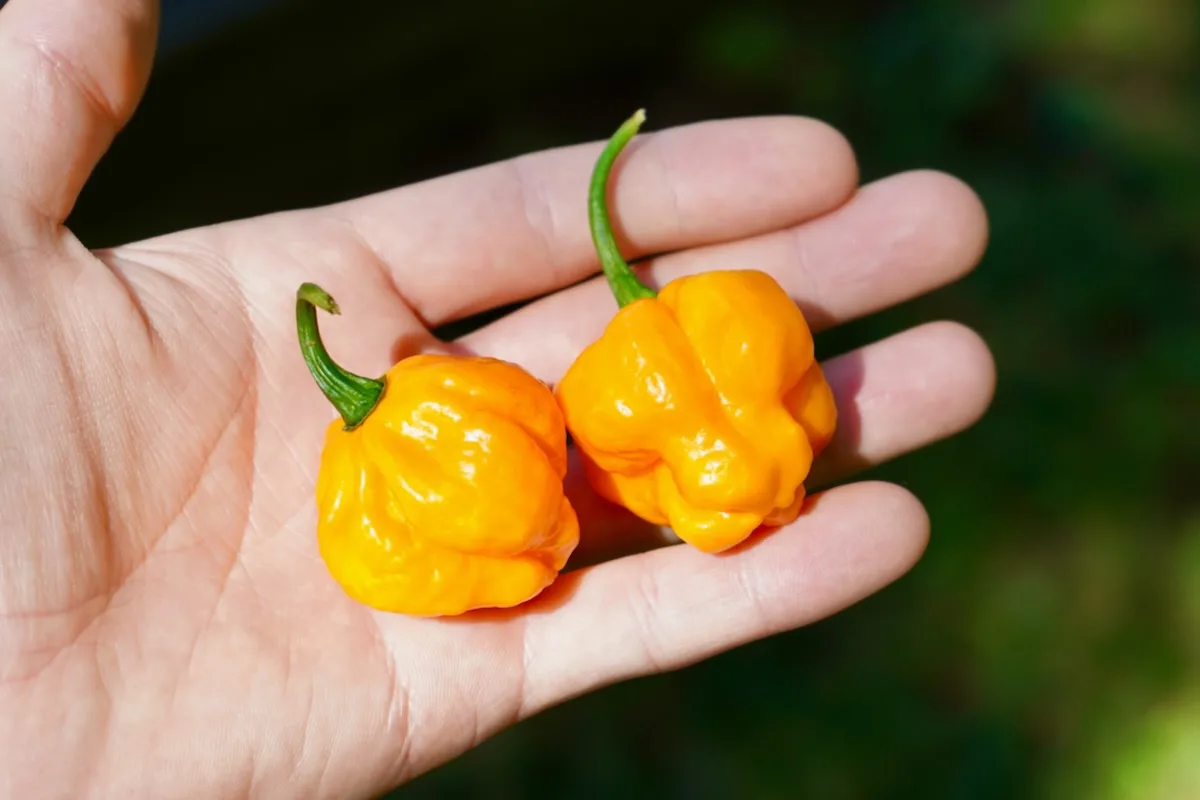
So, while the flavors are similar in many ways, they are different enough to pick favorites. In a pinch, one will make a great substitute for the other. Personally, I prefer the citrusy aroma and flavor of yellow scotch bonnets!
Scotch Bonnet vs Habanero Heat Level
Perhaps the most important question is this: which is hotter, a habanero or a scotch bonnet?
Generally speaking, scotch bonnets and habaneros have a similar heat level, both ranging from 100,000-350,000 SHUs on the Scoville scale. However, there are some super-spicy cultivars of habanero peppers that far exceed this rating.
For example, the red savina habanero tops out well over 500,000 SHUs. Other studies have shown that habaneros can exceed 800,000 SHUs. Again, the type of habanero makes a huge difference in heat level.
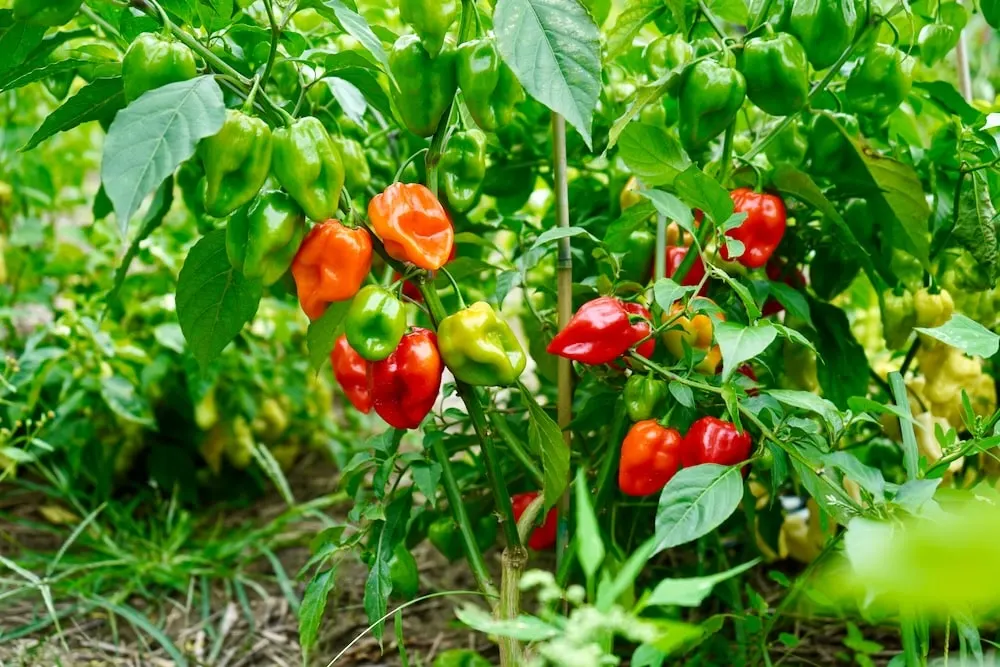
There are countless C. chinense pepper varieties that are grown in the Caribbean. These include the megahot 7 pot and Trinidad moruga scorpion peppers. So, it is likely that habaneros have been crossbred with these other hotter peppers over the years, resulting in extra-spicy “habaneros.”
The same is now true for scotch bonnet peppers. If you love the scotch bonnet flavor but need more heat, try growing the scotch brains variety!
If you’re looking to grow your own habaneros or scotch bonnets, we have some great guides to help you along the way. Both peppers are great for growing in containers or directly in the ground.
I hope this article helps you distinguish between scotch bonnets and habanero peppers. Both of these varieties are tremendously special and popular, and each has a permanent place in our garden each season!


Fettie
Saturday 16th of March 2024
Still can’t decide if I want to use a habanero in my stew chicken because I don’t have a scotch bonnet pepper 😫
Francis
Sunday 3rd of March 2024
I planted a pepper when it grew it produced fruits and the color of the fruit is creamy yellow then it changed to red I thought pepper usually change from Green to red colour was wondering if you could help me identify the special of the pepper also it is a dwarf pepper species
peppergeek
Wednesday 20th of March 2024
I can't be sure what variety you had, but many peppers start off creamy yellow before ripening to red. A couple that come to mind are banana peppers and jaloro (golden jalapeño).
Jack
Monday 30th of October 2023
Hey y'all, thanks for all the YT vids - I have a quick question about an orange hab seedling which is about 6" tall at the moment. When I transplanted it all the leaves dropped, like all of them - the same happened with the scotch bonnet from the same nursery.
They're both still healthy and have shot out new leaves and am pretty sure they'll make a full recovery.
Is there anything I can do to speed up/assist their recovery? Our harvest season down here is Dec-Apr, I think these two may not do much this season due to the shock but would appreciate any ideas you had.
Conversely, I'm happy just to let them be if that's the best idea.
Neal Hood
Saturday 14th of October 2023
Hello I love your youtubes i've learn alot i was raised on a farm mom & dad did not eat hot peppers i started after getting my own garden then got the wife hooked on habaneros bad I love them and jalpenos too I have a problem with habaeros not getting orange will they get orange after I pick them off the plant Neal
peppergeek
Monday 16th of October 2023
Habaneros take a long time to ripen, so sometimes it's just a matter of waiting a bit longer. They may ripen off the plant, but only if they were already close to ripening on the plant. If you pick them, put them in a warm spot to continue the ripening process.